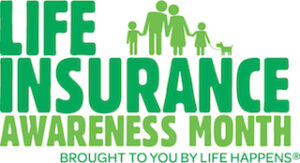New research from the American Council of Life Insurers (ACLI) shows that life insurance companies paid more than $90 billion to beneficiaries of life insurance policies in 2020, the highest ever in any single year.
It also represents a 15.4% increase in payments over 2019, which is the largest year-to-year increase since the 1918 Influenza Epidemic. The data was included in the 2021 ACLI Life Insurers Fact Book that was released Dec. 9.
“The data tells a compelling story about the resiliency of life insurers and their ability to protect Americans’ financial futures at all times” said Andrew Melnyk, ACLI Vice President, Research & Chief Economist. “In a year that was taxing for everyone, life insurance benefits provided families with the means to endure financially after the loss of a loved one.”
According to the 2021 Fact Book, total life insurance coverage reached $20.4 trillion in 2020, with a record $3.3 trillion in life insurance coverage purchased. In total, 43.1 million life insurance policies were purchased last year.
“Behind every data point, every payment and every policy, there are stories of real people and families who have found some peace of mind during a difficult time,” said Melnyk. “That is the mission of the life insurance industry and one we’re prepared to fulfill no matter what.”
Other selected highlights of the new Fact Book:
- Sales of group life insurance policies, which are primarily available through employers, increased 19% from 2019 to 2020. Individual coverage increased nearly 3%.
- Annuity payments to consumers increased in 2020 to $91 billion, a 3.9% jump from the previous year.
- Industry assets in 2020 totaled $8.2 trillion, a jump from $7.6 trillion—a 7.7% increase.
 The 2021 Fact Book contains aggregated 2020 life insurance company data that is filed with the National Association of Insurance Commissioners (NAIC). ACLI’s calculations of NAIC data is used with permission.
The 2021 Fact Book contains aggregated 2020 life insurance company data that is filed with the National Association of Insurance Commissioners (NAIC). ACLI’s calculations of NAIC data is used with permission.
With 12 chapters covering industry products, income and investment data and more, the Fact Book has been a go-to source for industry professionals, policymakers and the public for generations. The new edition marks the 75th anniversary of the ACLI Fact Book.
The Fact Book has become an essential publication for industry professionals by providing statistics and information on trends covering assets, liabilities, income, expenditures, reinsurance, life insurance, and annuities.













“The data tells a compelling story about the resiliency of life insurers and their ability to protect Americans’ financial futures at all times” said Andrew Melnyk, ACLI Vice President, Research & Chief Economist.
How So?
By the ability to pay claims that are above average or more than accounted for in the actuarial tables.
I would love to see a breakdown of the types of policies & how long in force.
My primary carrier was only up 8% in 2020 in death claims compared to the industry average of 15% even though we were in one of the worst hit initial states in spring 2020. Now, this year we are up 27% at 11/30/2021 compared to same 11/30/2020. Will be interesting to see industry numbers as I have heard Industry wide is worse in 2021 than 2020
I would like to see if the bulk of it is in the final expense marketplace. Obviously, guessing most is in the permanent policies based on the age bracket most impacted. But then again, term could be up dramatic as term usually has so few claims but large face, so it wouldn't take too many deaths in the age 25-60 age bracket to cause a large % spike. Have seen some multi-million dollar term death claims only in force 4 or 5 years on 30 & 40 year olds that died from covid
My comment was more meant for the authors to expand on such a point – but yes, I half agree with you. Not sure about the word "compelling" though…
Kind of makes you wonder what the total payouts were for 2021 with the virus & vaccines in full force. It wouldn't surprise me that the percentage could be even larger than last year’s 15.4% increase in payments compared to 2019's payments. We may also read later this year or next year that several life insurers take a rating hit or get really stretched and that some of those insurers weren’t as resilient as this article is implying them to be.
I am hearing 2021 was up 30% over 2020 which was up 15% over 2019.
India is even worse being up over 40% this year compared to 2020:. Life insurance death claims shoot 41%, up 3.5x in 2021
Through 3rd Qtr before it got even worse, globally there was $5.5B so far in 2021 compared to $3.5B in 2020 the entire year. That is 57% jump before even paying all the 4th Qtr claims on top of the $5.5B amount. I believe DI carriers were hit hard also. Life insurers adapt pandemic risk models after claims jump
Between 2019 and 2020, the US death rate increased by 1/10th of a person per 1000, rising from 8.782 to 8.880 per 1000. That is no worse than it was in the early 90's. The YOY increase was less than the preceding 5 year pre-pandemic period.
If pay-outs increased by 15%, this might suggest a lot of new policies were sold in relation to the pandemic.
Must be all those extra 1/10th of people owned a ton of life insurance.
I think early in covid it hit all the elderly especially in nursing homes who had little or no life insurance & were near life expectancy already. The more recent death claims covid or non covid have moved to somewhat younger ages when term life might still be active, resulting in larger claim payments
I would think the people who suddenly decide on becoming insured because of a pandemic are most likely to be Term buyers, therefore Term payouts likely increased more than other forms, because mortality rates were not really out of line with previous years/decades.
Agree. I just think there is a 6-18 month lag time on data being updated in some cases. So, maybe excess mortality will be slower to see but insurers are quicker to report paid claims than govt data bases being updated
Insurers are also omitting the increased revenues/profits generated during the pandemic, and while the pandemic won't last forever, many of those recently purchased policies will generate ongoing premiums lasting decades.
I think that has been pretty public that sales & premiums are up. But if you think the life & Annuity industry is killing it, tell me why so many carriers in the last decade have quit selling life & some have even sold their billion dollar life books for $0 to hedge funds just to get it off their books as it is such a drain on their overall surplus. Albeit, new sales priced today are certain to be much more profitable than all those old policies on the books priced with old interest rates
I'm not saying they are killing it, but offering a balanced perspective. I think when everything finally shakes out, overall, covid will be a positive rather than a negative. It's been a great way to promote the Life industry without a huge (or any) increase in marketing budgets.
I hope you are right, but my money is in the opposite direction.
The governments printing of money causing inflation & all the labor cost/tech cost increases have hurt expense ratios. Surplus being limited to being mostly invested in low interest rate instruments is making the other part of the profit equation deteriorate. Mortality worsening compared to priced mortality adds to expenses & drains on surplus & now will also come with much higher reinsurance premiums. More employees working fom home has caused bad customer service from carriers, IT vendors to the carriers & to agents.
I am not sure a 10% jump in 1-2 years individual sales will absorb all that. But, I would be glad to be wrong & tell you that you were right.
We are talking about 10 additional deaths per 100,000 people so only insurers who were living on the edge of profitability are likely to be impacted greatly.
Yeah– i get that, but seeing big numbers like $5.5B in death claims after 9 months when 2020 was $3.5B for entire year which was up from I believe about $2.8B seems like a bigger deal than just 10 additional deaths per 100,000 of population
Hard to believe it was related mainly to the pandemic if you ask me. The numbers just don't seem to jive with the mortality statistics, unless it was just a bad year for high net worth clients with huge policies?
How so?
that is why I am saying you are likely looking at death stats that have a lag time of being updated whereas carriers post filed claims quickly relatively speaking. I know the small single state multi-line carrier I work with is up $10M in claims (25%) in 2021 & up even more in the number of claims as many were small face WL from literally the 1950s-1970s one age 70-95 year olds. But there was also higher claim volume & face amount term on younger clients on all the reports the field gets to see each month regarding life claims
The article in question relates to 2020, but the mortality from 2021 was still only 8.977 per 1000 or an additional 9 deaths per 100,000 compared to 2020, so even if 2020 stats were delayed, they would have shown up by 2021. Between 2019 and 2021, mortality rates grew by an additional 19 per 100,000, which represents an increase of only 2.2%. This would suggest that a 15% increase in payouts can only partially be attributed to the affect of covid, but could include the fact that a greater percentage of the population purchased insurance during the pandemic, which would also mean premium revenues also increased a corresponding amount, unless those who recently purchased a policy died at a rate 5x greater than the general population?
Doesn't sound like a pandemic. :err::no:
That's because you're overlooking the fact that many of those deaths occurred WITH health protocols in place, therefore making an apples to apples comparison, rather than the actual apples to oranges comparison which existed during the pandemic. Underwriting is a whole different world than selling.